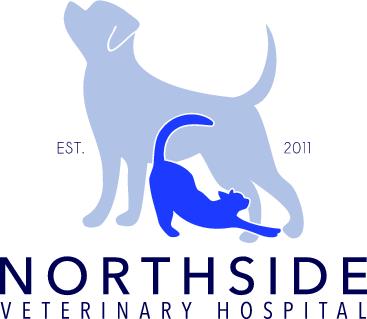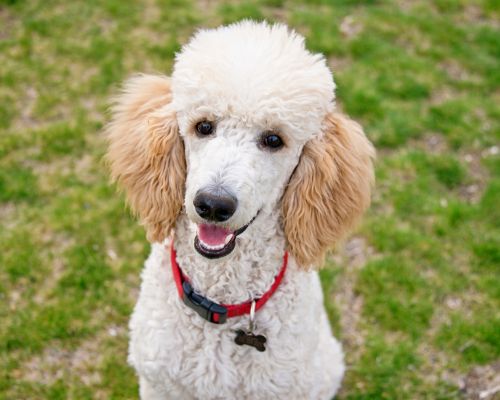Pet Gastropexy
If you are a pet parent to a large breed dog, you might be aware of a condition known as bloat or GDV (gastric dilatation volvulus). This life-threatening condition develops quickly and can be fatal.
Pet Gastropexy in Shawnee, OK
The good news is that you can take preventative measures to avoid it. If your dog has already had a GDV episode, you can also prevent it from recurring. This can be achieved by a preventative surgery known as gastropexy. Read on to learn more about this life-changing procedure offered at Northside Veterinary Hospital.
What Is Gastropexy?
This is a surgical procedure done to prevent gastric dilatation and volvulus (GDV), commonly known as bloat. The procedure is performed in large dog breeds like the Great Dane or German Shepherd. GDV is a life-threatening condition whereby the stomach fills with froth and gas (dilation) and flips over(volvulus), preventing the normal flow of fluids and gas through the stomach. Gas can’t escape, and sometimes the spleen can also get twisted with the stomach. When this happens, blood circulation to the stomach and spleen is impaired and can lead to the rapture of the stomach, causing shock and may result in painful death in a matter of minutes or hours. During gastropexy, the stomach is sutured or stitched to the body wall to permanently fix the stomach in position and prevent another episode of GDV in the future.
GDV commonly affects large or giant breed dogs such as the Great Dane, German Shepherd, Irish settlers, Labradors, Gordon Setters, Standard Poodles, Weimaraners, Boxers, Rottweilers, Basset Hounds, Doberman Pinschers, Greater Swiss Mountain Dogs, and Old English Sheepdogs. Large, deep-chested dogs are prone to GDV because their stomachs have more room to flip around and stay that way than in smaller breeds like Bulldogs.
There are two reasons for performing a gastropexy:
- To surgically treat a dog suffering from GDV
During surgery, the stomach will first be untwisted and return to its normal position, and then a gastropexy is performed to prevent it from twisting again. Most dogs that do not have gastropexy after a GDV have a high chance (76%) of recurrence within three months after treatment. Further, GDV episodes are reduced by 6%. - As a prophylactic (preventative) measure to avoid episodes of GDV
Gastropexy is done as a preventative measure before your dog has an episode of GDV in the future. The procedure can be done when you take your dog for neutering around 5 to 6 months of age. Gastropexy is minimally invasive and performed laparoscopically (keyhole) to prevent large incisions and reduce recovery time than conventional open surgery. A laparoscopic gastropexy requires special surgical equipment and extensive surgical expertise to perform.A prophylactic gastropexy is best done on dog breeds that are at higher risk of developing GDV. The technique has less trauma, pain, minimal complications, and a faster recovery process for your dog. According to a study, Great Danes that had undergone a prophylactic gastropexy were 30 times less likely to die from a GDV than those dogs who hadn’t. If you want your giant breed dog to benefit from a prophylactic gastropexy, talk to your vet about it.
Recovery
The surgery takes 35 to 45 minutes for the procedure. Most dogs do not appear to be in pain after surgery. Incisions take 7 to 10 days to heal, and your dog will be hospitalized for several days after surgery. Your vet will give you postoperative care instructions. During your dog’s recovery, do the following:
- Give medications as instructed by your vet. In case of any adverse reactions, lack of appetite, or vomiting should be immediately reported. Your dog will be given a prescription diet and medication to protect its gastrointestinal tract.
- Keep the incision site clean and dry, and look for infection signs such as redness, swelling, and discharge.
- Let your dog have normal meals and water. Avoid overfeeding and give smaller meals and have a feeding schedule.
- Your dog should wear an E-collar until staples are removed to avoid licking the sutures—no baths or swims so as to keep the incisions dry.
- Avoid slippery floors, no jumps, stairs or rough playing, or running for at least 14 days for complete healing.
- Schedule suture removal 10 to 12 days after surgery.
- Monitor healing progress and look for signs of post-surgical complications like vomiting, pain, or excessive bleeding.
Normal activities may continue with restriction until your dog is fully healed.
At Northside Veterinary Hospital, our surgeons are highly experienced and equipped to perform complex gastropexy surgery. We compassionately treat your dog and take away your worries about your dog getting GDV. Contact us today for more information about the procedure. You can also schedule an appointment online.

